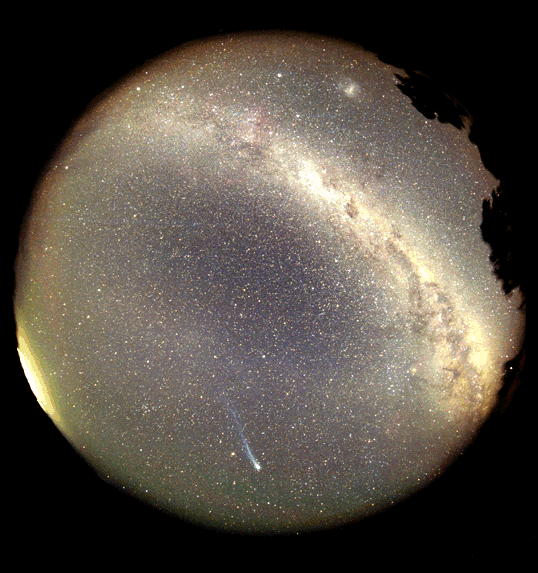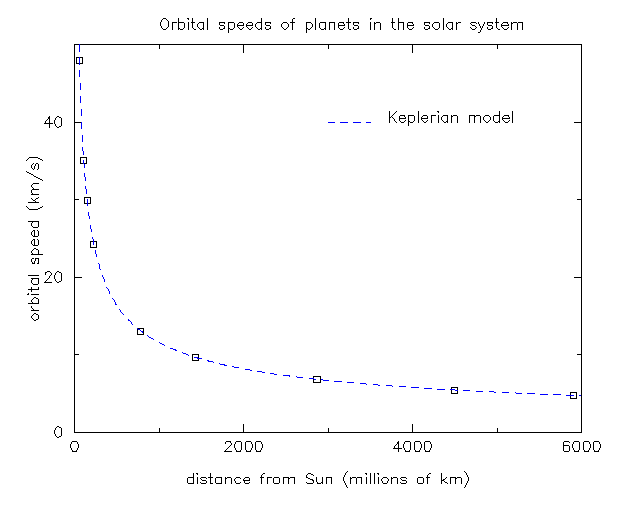

 Copyright © Michael Richmond.
This work is licensed under a Creative Commons License.
Copyright © Michael Richmond.
This work is licensed under a Creative Commons License.
When we look at our Milky Way galaxy with ordinary optical telescopes, we see that it contains a number of features:


In our solar system, planets orbit around the Sun, which contains more than 99% of the total mass in the system. The gravitational force of the Sun on each planet is much, much stronger than the gravitational force of the other planets. Because the strength of the gravitational force of the Sun decreases with distance from it, it accelerates the outer planets less than the inner planets. We can see this if we plot the orbital speed of each planet against its distance from the Sun:

The Milky Way looks as if most of the mass is concentrated in the nucleus: that's where most of the light is. So we might expect that the stars and gas in the disk of the galaxy would follow the same sort of relationship between orbital radius and orbital speed. But when we look, we see something very different. In the inner galaxy, the rotation speed rises with radius:
And in the outer galaxy, the rotation speed remains roughly constant:
What's going on?
Evidence for very large mass near the center of the Milky Way -- watch the stars in this area move over just 4 years!
One can determine the speeds of stars in this very central portion of the Milky Way from their motions in these images. One can then ask -- are the speeds consistent with various models of the center of the galaxy?
 Copyright © Michael Richmond.
This work is licensed under a Creative Commons License.
Copyright © Michael Richmond.
This work is licensed under a Creative Commons License.